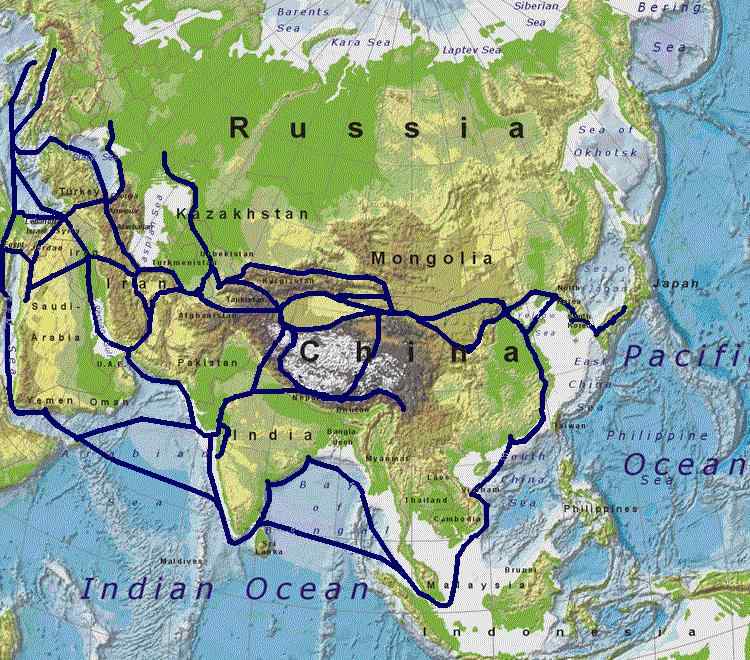The Silk Road: How Ancient Trade Routes Shaped the Modern World
Unveiling the Silk Road's Legacy: Ancient Trade Routes Connecting East and West

For centuries, the Silk Road was not merely a single path, but an intricate network of ancient trade routes spanning over 4,000 miles, fundamentally connecting the East and West. Far more than just a conduit for luxurious silk – a commodity that undeniably held immense significance – this remarkable network facilitated a profound exchange of goods, innovative ideas, diverse religions, and rich cultures. This article delves into the fascinating history, significant impact, and enduring legacy of this pivotal historical trade network, exploring its rise, peak, decline, and its modern-day revival.
The Rise and Development of the Silk Road: Ancient Trade Routes Shaping Civilizations (2nd Century BCE - 14th Century CE)

The origins of the Silk Road can be traced back to the Han Dynasty in China (207 BCE – 220 CE). Emperor Wu of Han dispatched Zhang Qian on an envoy mission, seeking alliances against the Xiongnu nomadic group that threatened China's borders. While a full military alliance didn't materialize, Qian's extensive travels successfully opened up vital trade routes to Central Asia, initiating a groundbreaking exchange of goods. This primarily involved valuable Chinese silk being traded for horses and other essential commodities from the West.
Initially, this extensive trade network primarily facilitated the movement of luxury goods. From the East flowed silk, exotic spices, tea, and delicate porcelain, while the West offered wool, linen, gold, silver, and precious stones. Over time, the network expanded considerably, branching into numerous routes that traversed challenging deserts, towering mountains, and vast steppes. Key urban centers such as Samarkand, Bukhara, Kashgar, and Dunhuang blossomed into thriving trading hubs, evolving into vibrant melting pots of diverse cultures and knowledge. Powerful empires like the Kushan Empire, the Parthian Empire, and later the Sasanian Empire played pivotal roles in controlling and facilitating the smooth flow of trade along the Silk Road.
Cultural Exchange on the Silk Road: Spreading Ideas, Religions, and Technologies

The profound impact of the Silk Road stretched far beyond the mere exchange of material goods. It served as a critical conduit for the widespread transmission of ideas, religious beliefs, and groundbreaking technologies. Buddhism, originating in India, traveled eastward along these ancient trade routes, becoming a dominant religion across China, Korea, and Japan. Nestorian Christianity, Manichaeism, and Islam also spread along these pathways, establishing communities and significantly influencing local spiritual landscapes.
Technological innovations also flowed dynamically in both directions. Advanced Chinese papermaking and printing techniques revolutionized communication across the West, while Western advancements in glassmaking and metalworking made their way to the East. Valuable mathematical knowledge, precise astronomical observations, and effective medical practices were also widely shared, fostering significant intellectual growth in both regions. However, the transmission of diseases was an unfortunate consequence, with devastating outbreaks like the bubonic plague traveling swiftly along these interconnected routes.
The Decline and Lasting Legacy of the Silk Road: A Shift in Global Trade Routes (15th Century CE onwards)
The Silk Road began its decline in the 15th century, influenced by several key factors. The emergence of new maritime trade routes, pioneered by intrepid European explorers such as Vasco da Gama, offered a significantly faster and more cost-effective alternative for transporting goods across vast distances. Political instability within Central Asia, including the fragmentation of the formidable Mongol Empire, also severely disrupted the established patterns of global trade. Furthermore, the Ottoman Empire's strategic control over key land routes led to increased tariffs and restricted access, further diminishing the viability of overland trade.
Despite its eventual decline as the primary trade route, the Silk Road's legacy remains profoundly impactful. It successfully fostered an unparalleled interconnectedness between the East and West, fundamentally shaping the cultural, economic, and political landscapes of the regions it linked. The extensive exchange of ideas and technologies laid crucial foundations for many modern advancements and continues to influence global interactions today.
The Modern Silk Road: China's Belt and Road Initiative and Global Connectivity
In the 21st century, China embarked on the Belt and Road Initiative (BRI), an ambitious global infrastructure development project. This initiative aims to revive the spirit of the ancient Silk Road by building extensive networks of roads, railways, ports, and other critical infrastructure across Asia, Africa, and Europe. The core objective is to significantly enhance global trade and connectivity. While the BRI has garnered both enthusiastic support and considerable criticism, it undeniably represents a monumental effort to re-establish the Silk Road's historical role as a vital bridge between East and West in the modern era, fostering new pathways for global economic development.
Conclusion

The Silk Road stands as an enduring testament to the immense power of global trade and profound cultural exchange. Its rich history is a complex tapestry intricately woven with threads of commerce, religious diffusion, groundbreaking innovation, and periods of conflict. While the ancient Silk Road may no longer exist in its original form, its lasting legacy continues to shape the interconnected world we inhabit. It serves as a powerful reminder of the deep interconnectedness of human civilization and the invaluable, enduring benefits derived from cross-cultural dialogue and collaboration.
